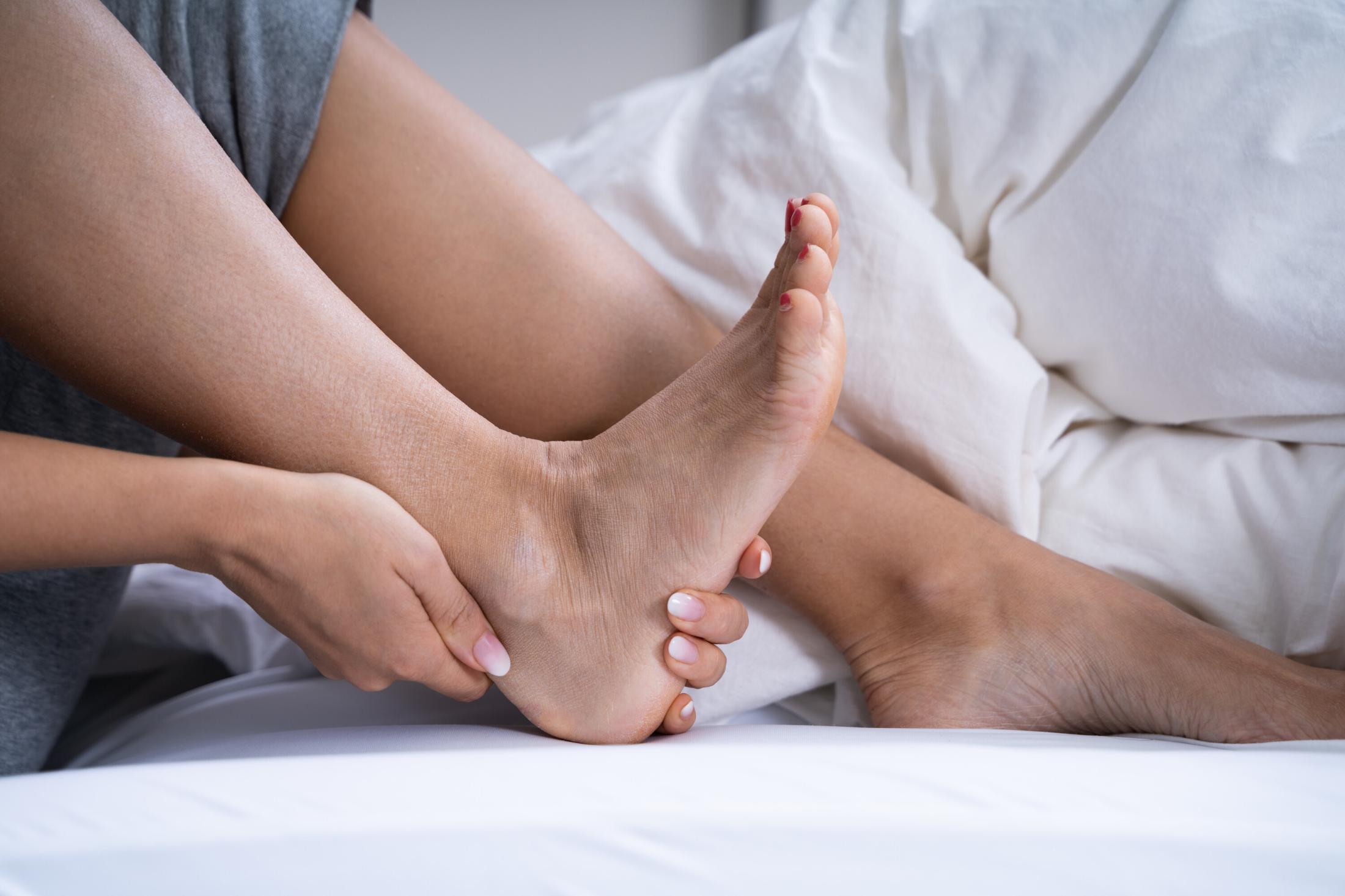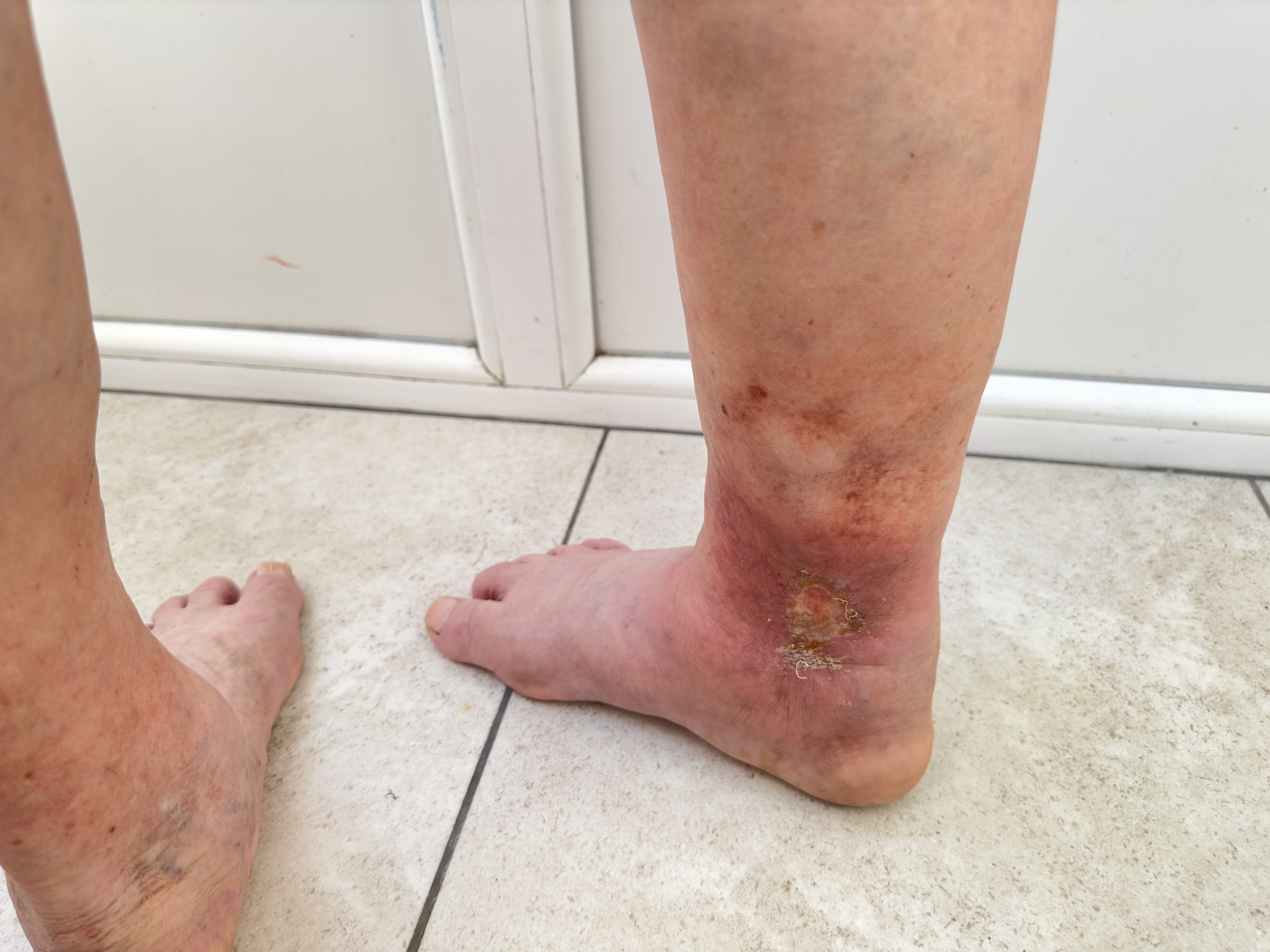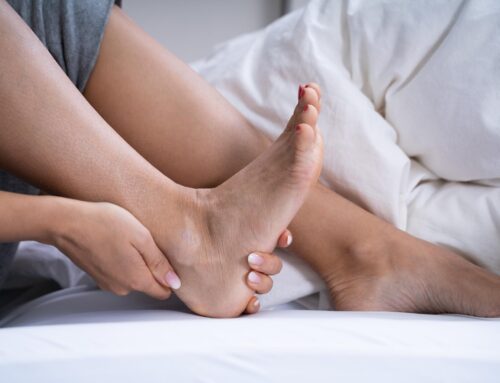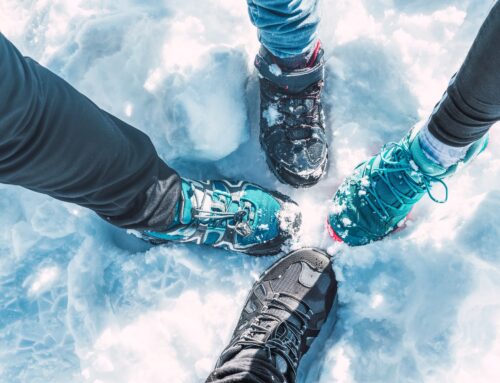A lot of people reach for knee-high compression socks thinking they’ve checked the box, a simple solution for tired, swollen legs. And for many, that’s true. They’re easy to wear, they slip right into your everyday routine, and they can make a noticeable difference in comfort.
Sometimes what feels “good enough” falls short, especially if swelling creeps higher up the leg or if there are underlying circulation concerns.
What Knee-High Compression Socks Can Help With
Knee-high compression socks are often the first step people take when they want to ease tired legs or improve circulation. They’re convenient, discreet, and can make a noticeable difference in everyday comfort.
Everyday swelling and fatigue
Long days on your feet, whether at work or running errands, can leave your legs feeling heavy and achy. Knee-high compression socks help by gently supporting circulation in the lower legs, reducing that end-of-day swelling and giving your calves a lighter, more energized feel.
Travel and sitting long hours
Whether it’s a long flight or a desk job, sitting for hours can slow blood flow in your legs. Knee-highs are a simple, packable solution that reduce the risk of fluid pooling in your calves and ankles, keeping you more comfortable and lowering the risk of clots on long-haul trips.
Sports recovery
Athletes and weekend warriors alike use compression socks to help muscles recover faster after workouts. The steady pressure can limit muscle vibration during activity and support quicker recovery, especially for runners and those who spend a lot of time on their feet.
Signs Knee-Highs Might Not Be Enough
Knee-high compression socks are a great starting point, there are times when they simply don’t provide enough coverage. Paying attention to these signs can help you know when it might be time to consider a longer style or talk to a specialist.
Swelling above the sock line
If you notice puffiness just above where the sock ends, at your knee or lower thigh, it’s a clue that fluid is building higher up the leg. This doesn’t always mean something serious, but it does suggest that your socks aren’t offering full support. In many cases, moving up to thigh-high or pantyhose compression can help manage swelling more evenly.
Ongoing pain in thighs or groin
Compression socks are designed to relieve lower-leg discomfort, but if you’re feeling persistent pain in your thighs, groin, or hips, it could mean the issue is happening higher in your circulation system. Knee-highs won’t be able to address this, and a longer garment, or professional evaluation, may be necessary.
Medical conditions needing higher coverage
For certain conditions, knee-high compression just isn’t enough. Issues like deep vein thrombosis (DVT), lymphedema, or more advanced varicose veins often require thigh-high or full-length compression to manage blood flow properly. In these cases, a healthcare provider’s guidance is important, since the right level of pressure and fit makes all the difference.
Seasonal effects on swelling
The time of year can make a big difference in how well knee-highs work. In summer heat, blood vessels naturally expand, which can make swelling worse, and sometimes knee-highs don’t feel like enough coverage. In cooler months, when swelling tends to be milder, knee-highs are often plenty to keep legs comfortable and supported.
Knee-High vs Thigh-High vs Pantyhose Compression
Not all compression garments are created equal. The right choice depends on where swelling or discomfort shows up in your body and how much support you need.
Knee-high compression socks
- Benefits: Easy to wear, discreet under pants, good for everyday swelling in the feet and calves, travel, and sports recovery.
- Limitations: Only cover the lower leg, they won’t help if swelling or discomfort extends above the knee.
Thigh-high compression stockings
- Benefits: Provide support through the thigh, helpful if swelling moves above the calf or if varicose veins extend higher up the leg.
- Limitations: Can be harder to put on, more likely to roll down if not fitted properly, less comfortable in hot weather.
Pantyhose (full-length) compression
- Benefits: Offer the most comprehensive coverage, often recommended for DVT, lymphedema, orvaricose veins. They also support the hips and groin area.
- Limitations: Warm to wear, trickier to get into, and usually more expensive.
Quick Comparison
| Style | Best For | Benefits | Limitations |
|---|---|---|---|
| Knee-High | Everyday fatigue, travel, sports recovery | Easy to wear, discreet, affordable | Stops at calf, may cause swelling above sock line |
| Thigh-High | Swelling above calf, varicose veins in thighs | More coverage, better for advanced circulation needs | Can slip/roll down, less breathable |
| Pantyhose | DVT, lymphedema, varicose veins | Full-leg support, covers groin/hips | Warm, harder to don, higher cost |
Think of compression wear like clothing layers: knee-highs are the t-shirt, light, easy, and great for most days. Thigh-highs are the long-sleeve, more coverage when you need it. Pantyhose are the full suit, complete support for when the occasion (or condition) calls for it.
How to Get the Most from Knee-High Compression
Knee-high compression socks work best when they’re worn correctly and comfortably. A few simple adjustments can make all the difference in how effective, and how wearable, they really are.
Proper fit and sizing
Compression socks aren’t one-size-fits-all. Measuring your calf and ankle before buying ensures you get the right pressure where it’s needed most. A sock that’s too loose won’t offer enough support, while one that’s too tight may cause discomfort or even restrict circulation. If you’re unsure about sizing, contact Care-Med. Our certified fitters can help you find the right compression level and fit.
When to wear them
Knee-highs are most effective when worn during activities that strain your legs. That might be a long day at work, standing on your feet, sitting through a cross-country flight, or even while recovering after exercise. Many people find the best results come from putting them on first thing in the morning, before swelling has a chance to build up.
Common mistakes to avoid
- Rolling down the socks
This creates a tourniquet effect that can worsen swelling above the fold. - Choosing the wrong pressure grade
Mild compression is enough for travel and daily fatigue, but medical conditions often require a higher grade prescribed by a clinician. - Wearing damaged socks
Compression fabric loses effectiveness over time, replace them every 4–6 months with regular use.
Special Cases
Compression isn’t one-size-fits-all, different life stages and routines can change what kind of support you need.
Pregnancy
During pregnancy, extra weight and hormonal changes can lead to swelling in the feet and ankles. Knee-highs are often the first choice since they’re easier to wear and more comfortable in warmer months. But as pregnancy progresses and swelling sometimes extends above the calf, longer compression (like thigh-highs or maternity pantyhose) may offer more relief.
Post-surgery
After certain procedures, especially those involving the legs, doctors may recommend knee-high compression to keep blood flowing while you’re less mobile. In these cases, the socks are often a short-term solution. As recovery continues, your healthcare provider may suggest switching to a different length or stopping use altogether.
Desk vs. standing jobs
Your daily routine also matters. If you’re at a desk most of the day, knee-highs can help counteract the effects of sitting still for long stretches. On the other hand, people in jobs that require long hours standing, like retail, healthcare, or teaching, may benefit even more, since knee-highs reduce that heavy, achy feeling that builds up by the end of the shift.
When to See a Specialist
Compression socks are a great first step, but they’re not a cure-all. If you’ve been wearing knee-highs and still notice ongoing issues, it’s a good idea to check in with a healthcare professional.
Mild swelling at the end of a long day is normal, but if your legs or ankles stay swollen even after rest, or if swelling gets worse over time, it may signal a deeper circulation concern that socks alone can’t solve.
Watch for new or worsening varicose veins, darkening of the skin around your ankles, or patches of dryness and irritation. These are signs that blood isn’t moving efficiently, and higher levels of support or a different type of garment might be needed.
Even small differences in size and pressure can affect how well compression works. At Care-Med, our certified fitters take precise measurements, recommend the right length and pressure grade, and make sure you’re comfortable so you get the most benefit without the trial and error of guessing on your own.
Finding the Right Support for Your Legs
Knee-high compression socks are often the perfect first step, simple, affordable, and effective for many everyday situations. But they’re not always the full solution, especially if swelling moves higher up the leg or if circulation issues become more complex. The key is knowing when “good enough” isn’t quite enough.
At Care-Med, we specialize in helping people find the right fit, length, and compression level for their unique needs. Whether you’re dealing with everyday fatigue, recovering from surgery, or managing a medical condition, a professional fitting can make all the difference in comfort and results.
Your legs carry you through so much, giving them the right support is one of the best investments you can make in your daily comfort and long-term health
Share This Story, Choose Your Platform!
Table of Contents
We specialize in orthotics, body braces, and compression wear tailored to your unique needs in Toronto. Reach out to us at info@caremed.care or call 416-782-5353 to book your fitting and consultation.
Experience the difference of customized solutions designed just for you.











